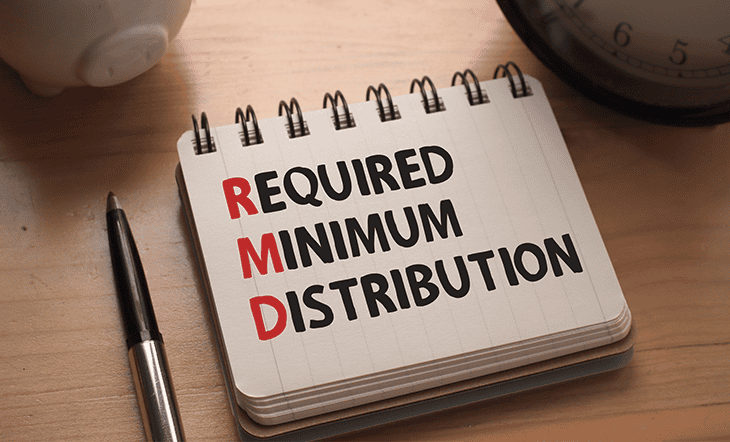Home > Retirement > Should You Keep Your Money with Your Employer’s 401(k) Plan After You Retire?
Should You Keep Your Money with Your Employer’s 401(k) Plan After You Retire?
One critical financial decision looms large as you approach retirement - how does a 401(k) work when you retire? Knowing what to do with the nest egg you have diligently built through your employer’s 401(k) plan is essential. While contributing to your 401(k) retirement account during your working years is a common and beneficial habit, things might change once you retire. The contributions stop when you stop working, and you may find yourself at a crossroads, contemplating the future of your retirement funds and financial security. The choices you make regarding your 401(k) can significantly impact your post-retirement financial security. Leaving your money invested in your employer’s 401(k) plan or considering alternative avenues are some options that need careful consideration and a thorough understanding of the available options.
A financial advisor can help you understand the options available to you as you navigate the transition from accumulating wealth in your 401(k) to managing and maximizing it during your retirement. This article will guide you through the key considerations and shed light on the potential choices at your disposal.
Table of Contents
Should you stay invested in your employer’s 401(k) after you retire?
Choosing to leave your retirement savings with your employer’s plan can be a strategic decision with both advantages and disadvantages. If your account balance is at least $5,000, you can leave your money in your 401(k) after retirement. This choice may appeal to you, especially if you find the investment funds within the 401(k) plan attractive. However, there are both advantages and drawbacks to consider when deciding whether to keep your funds in your 401(k) post-retirement.
One notable advantage is the continued tax-deferred growth that you get to benefit from even after retiring. Retaining your funds in the 401(k) allows you to capitalize on the benefits of tax-deferred earnings until withdrawal. This arrangement offers the potential for faster overall growth compared to a taxable account, where your investment gains may be subject to annual taxation. Tax, as you may know, can eat into your profits and impact your financial growth. A 401(k) plan is a way out of paying unwanted taxes. Another benefit of keeping your funds in a 401(k) is familiarity with existing investment options within the account. If you are content with the offerings within your 401(k) plan, leaving your money there can ensure consistency in your investment strategy. This can be particularly advantageous if you have become accustomed to the risk profiles and historical performance of the plan’s funds.
However, there are drawbacks to leaving money in a 401(k) after retirement. Notably, the end of contributions is a critical limitation. Once you retire and are no longer on the payroll, you cannot make new contributions to your 401(k). Your employer will also not contribute to your account. So, you will lose an opportunity to earn extra money. This limits your ability to add fresh funds and take advantage of potential market opportunities or changes in your financial situation. A lack of flexibility can hinder the ability to capitalize on new financial opportunities or adapt to changes in your financial situation.
It is important to note that the decision to leave your money in a 401(k) after retirement should be made with careful consideration of your individual financial goals and circumstances. The potential for continued tax-deferred growth and access to familiar investment options are compelling reasons to maintain funds in the 401(k) plan. However, the absence of contribution flexibility and the absence of employer matches may prompt some individuals to explore alternative strategies for managing their post-retirement finances. Evaluating these factors in the context of your specific financial objectives is crucial to determining the most suitable course of action.
If you do steer towards alternative approaches, here are some common options you can consider:
1. Roll over your 401(k) to an Individual Retirement Account (IRA)
The second option you have after retirement is to transfer your accumulated 401(k) assets to an Individual Retirement Account (IRA). An IRA is a special savings account that can be used for retirement savings, just like a 401(k). However, a 401(k) is tied to your job, and you can only contribute through your employer. Contrarily, IRAs can be opened by investors at a bank, credit union, or insurance company. While both help secure your future, the choice between a 401(k) and an IRA depends on your employment situation, preferences, and long-term financial goals. There are two types of IRAs – Traditional and Roth. With a Traditional IRA, you put in money before taxes, letting it grow tax-deferred until you withdraw it during retirement. This can lower your current tax bill. Roth IRA, on the other hand, uses after-tax dollars, but your withdrawals in retirement are tax-free. Both IRAs have contribution limits, and penalties may apply if you take money out before age 59½.
Control is one of the most significant attractions of an IRA. Since the IRA is not employer-sponsored, you have much better access and control over your investments. Additionally, an IRA also offers a broader range of investment options. This can be appealing, especially if you are seeking a personalized approach to your retirement portfolio. In fact, an IRA may be able to serve as a valuable instrument for individuals with a higher degree of financial literacy as it offers room to align your investments as per your unique preferences. It also allows for a greater level of customization in investment strategies and caters to diverse needs.
Additionally, an IRA is a versatile tool, as it can help you consolidate multiple disparate 401(k) accounts from various employers. Most people work in different companies throughout their careers. Unless you keep rolling your older 401(k) into the new employer’s 401(k), you are likely to have more than one 401(k) account. An IRA helps you consolidate all your 401(k) accounts into a single asset. This consolidation not only simplifies your finances but also provides flexibility in tailoring investment strategies according to your unique retirement objectives. Consider a scenario where you have changed jobs multiple times, leading to the existence of scattered 401(k) accounts. In this case, rolling over these accounts into an IRA can streamline your financial management and provide a consolidated platform for strategic investment planning. It can also help you narrow down the fees, manage your investments more seamlessly, and make better decisions because of reduced confusion.
When opting for an IRA transfer, you can choose between a direct rollover and a 60-day rollover based on your preferences and circumstances:
a. Direct rollover
With a direct rollover, you can instruct your employer to transfer your 401(k) assets directly to the investment company managing your IRA. This method is advantageous as it is a tax and penalty-free transfer and helps streamline the process and preserve the entirety of your retirement savings.
b. 60-day rollover
Alternatively, if your 401(k) distribution is paid directly to you, you have a 60-day window to deposit all or a portion of it into your IRA. But the catch is that taxes are taken out from that amount before you receive it. So, when you want to move that money into your IRA within the next 60 days, you need to come up with additional funds from your own pocket to cover the taxes that were withheld. For example, if you receive a $10,000 distribution from your 401(k) through a 60-day rollover, the plan might withhold, let’s say, 20% for taxes. That means you will get $8,000 in hand. To roll over the entire $10,000 into your IRA without any tax implications, you need to add $2,000 from your own funds to make up for the withheld taxes. It is like getting a partial loan from yourself, where you need to repay the withheld taxes if you want to keep the full amount in your retirement savings without triggering extra taxes or penalties.
While rolling over to an IRA can be a good choice for various reasons, when considering this move, you must assess the cons as well. It is important to note that the fee structures in IRAs, when compared to large company 401(k) plans, can lead to unexpected financial challenges. Transitioning from a low-fee employer-sponsored plan to an IRA may result in a substantial escalation in costs for retail investors. Even though 401(k) rules for employers can differ, in most cases, large company 401(k) plans, due to their scale, offer lower fees compared to IRAs. Additionally, some 401(k) plans may provide superior retirement income options, including the conversion of savings into a steady income stream during retirement. These benefits may offer cost-effectiveness and contribute to the preservation of your retirement assets. Transferring to an IRA may result in the forfeiture of these employer-specific benefits provided by the 401(k) plan.
Another con of rolling over your 401(k) funds to the IRA is that you will have to go through a complex rollover process. The 60-day rollover method poses the risk of tax implications if the full amount is not rolled over within the stipulated timeframe. This adds complexity to your retirement planning. Therefore, you must understand that navigating the nuances of tax implications, potential fees, and the intricacies of various retirement plans requires careful consideration and, in some cases, professional financial advice. The decision also hinges on your financial literacy. For those who lack financial expertise or interest, the stability and fiduciary responsibility of 401(k) plans can be a reassuring asset. Compared to this, the thought of managing your IRA yourself can be daunting.
SPONSORED WISERADVISOR

Choosing the right financial advisor is daunting, especially when there are thousands of financial advisors near you. We make it easy by matching you to vetted advisors that meet your unique needs. Matched advisors are all registered with FINRA/SEC. Click to compare vetted advisors now.
2. Take a lump-sum distribution
Entirely cashing out your 401(k) after leaving a job is another option at your disposal. One significant advantage of taking a lump-sum distribution is the immediate access to a substantial amount of money. This can be particularly appealing if you have specific financial goals or large expenses, such as paying off a mortgage, funding a child’s higher education, or taking a dream vacation. The lump sum provides liquidity that can be utilized according to your immediate needs. For example, if you wish to purchase a home for your retirement, quick access to a large sum can help you make a substantial down payment and secure a comfortable living arrangement without the constraints of monthly mortgage payments. Unlike the confines of a 401(k) plan, taking a lump-sum distribution also allows you greater flexibility in choosing how to invest your money. Whether you want to explore different investment vehicles, pursue entrepreneurial ventures, or diversify your portfolio, the lump sum provides the freedom to tailor your investment strategy according to your risk tolerance and preferences.
However, balancing your desire for immediate financial flexibility with the need to ensure a secure and lasting retirement requires a thoughtful evaluation of the pros and cons associated with this option. While a lump sum provides immediate access to funds, there is a risk of overspending and depleting your retirement savings prematurely. Without the structured approach of periodic withdrawals, there is a higher likelihood of financial mismanagement that can potentially jeopardize your long-term financial security. Additionally, if the lump sum is not managed prudently, there is a risk of outliving your savings, especially if you underestimate your life expectancy. Longevity risk coupled with inflation can be detrimental to your retirement savings. It can affect long-term care, healthcare, and several other essential needs in your older years. Another drawback of taking a lump-sum distribution is the potential tax implications. Withdrawals from traditional 401(k) contributions are treated as taxable income, and the amount withdrawn is subject to income tax. Traditional accounts are known as pre-tax accounts, which means that your tax payments are pending and pushed to the future for when you make withdrawals. Depending on the size of the distribution, this can result in a significant tax liability and reduce the actual amount you receive.
Consulting with a financial advisor or tax planner before opting for a lump sum distribution from a retirement account is crucial. This decision can have significant tax implications, potentially affecting your overall financial situation. A professional can help you assess the potential tax consequences, explore alternative strategies, and ensure that you don’t end up paying more in taxes than necessary.
3. Take 401(k) RMDs at age 73
The Internal Revenue Service (IRS) mandates RMDs, generally beginning at age 73, for traditional 401(k)s. Opting to take 401(k) RMDs at age 73 provides you with flexibility in managing your cash flow during retirement. RMDs act as a structured way to receive a portion of your retirement savings and ensure a steady income stream. This regular influx of funds can be instrumental in covering your living expenses, managing healthcare costs, and facilitating a comfortable retirement lifestyle. While RMDs require you to withdraw a minimum amount from your 401(k) each year, the remaining balance continues to have the potential for growth. By leaving a portion of your retirement funds invested, you give your portfolio the opportunity to benefit from market gains. This potential for continued growth can contribute to the longevity and sustainability of your retirement savings and help you combat inflation, longevity risk, and more. You can use a 401(k) calculator to determine how your funds continue to grow even with RMDs to get better clarity.
RMDs, even though the obvious choice for most people, do carry some cons. One of the drawbacks of relying on 401(k) RMDs is the vulnerability to market fluctuations. The annual withdrawals are based on the previous year’s account balance, which can be influenced by market ups and downs. If there are substantial market losses, it may affect the sustainability of your 401(k) portfolio over time. For example, the impact of COVID-19 was evident in lowered 401(k) balances in 2020. These directly affected withdrawal amounts in the subsequent years. The pandemic led to significant market downturns, reducing the value of retirement accounts at large. Individuals who retired during this period faced immediate financial repercussions and may likely be impacted in the long term.
Another thing to note is that RMDs are calculated as per the life expectancy factor. The life expectancy factor is a multiplier determined by the IRS that reflects the average life expectancy of an account holder based on their age. The IRS provides a set of life expectancy tables that assign a specific factor to each age. These factors are used in the calculation of RMDs to determine the minimum amount an individual must withdraw from their retirement account each year to satisfy tax regulations. The life expectancy factor used in RMD calculations provides a guideline, but individual circumstances may vary, and your RMD calculation may not always be according to your needs. In some cases, there can be a risk of outliving your savings, especially if you live longer than the average life expectancy. Relying solely on RMDs without additional financial planning may leave you with insufficient funds in the later stages of retirement. As you navigate this option, consider your individual financial goals, risk tolerance, and the need for additional financial planning to ensure a secure retirement.
4. Convert your 401(k) plan to an annuity
Some 401(k) plans provide the opportunity to transform your accumulated savings into an immediate annuity. The primary advantage of converting your 401(k) into an annuity is the assurance of a guaranteed income stream. An immediate annuity provides you with predictable monthly payments and financial stability during retirement. An annuity simplifies your income planning by transforming a lump sum 401(k) balance into a structured payment plan. This simplicity can offer a straightforward approach to managing your finances without the complexities of investment decisions. Annuities also address the risk of outliving your savings. They provide a guaranteed income for life and help mitigate the risk of exhausting your retirement funds. Additionally, annuities may offer flexibility in retirement planning as they do not have RMDs. With annuities, you have the freedom to choose how much you want to withdraw and align your financial needs and income in a better manner. Unlike traditional retirement accounts like the 401(k) that mandate specific withdrawal amounts, annuities empower you to tailor your income to your preferences. This flexibility can give you the ability to navigate your retirement finances more strategically and adapt to changing circumstances.
However, you must understand that converting your 401(k) to an annuity means relinquishing some control over the underlying funds. If you have a pressing financial need that needs immediate funds, you may not have access to it, depending on the terms and conditions of your annuity. This lack of liquidity can be a concern in case of unforeseen emergencies or financial needs. Moreover, the security of your annuities is contingent upon the issuer. If the insurance company that issued the annuity faces financial challenges, there is a risk that the guaranteed payments may be affected. Hence, it is essential to select a reputable and financially stable insurance company if you choose this option.
To conclude
Deciding what to do with your 401(k) when you retire is a crucial step in securing your financial future. There are several options available, and it is essential to understand each one in detail. You must consider factors such as your risk tolerance, income needs, and long-term goals. Keep in mind that there is no one-size-fits-all approach, and the best choice depends on your individual needs and circumstances. Consulting with a financial advisor can be helpful. A financial advisor can offer personalized advice by taking into account your unique financial situation. Remember, the decision you make will play a significant role in shaping your financial well-being throughout your retirement, so take the time to choose the option that aligns best with your needs.
Use the free advisor match service to connect with experienced financial advisors who can guide you through the complexities of deciding whether to keep your money in your employer’s 401(k) plan or not. Answer a few simple questions based on your financial needs, and the match tool can help connect you with 1 to 3 financial advisors who are best suited to help you.
To learn more about the most suitable tax-saving strategies for your specific financial requirements, visit Dash Investments or email me directly at dash@dashinvestments.com.
About Dash Investments
Dash Investments is privately owned by Jonathan Dash and is an independent investment advisory firm, managing private client accounts for individuals and families across America. As a Registered Investment Advisor (RIA) firm with the SEC, they are fiduciaries who put clients’ interests ahead of everything else.
Dash Investments offers a full range of investment advisory and financial services, which are tailored to each client’s unique needs providing institutional-caliber money management services that are based upon a solid, proven research approach. Additionally, each client receives comprehensive financial planning to ensure they are moving toward their financial goals. CEO & Chief Investment Officer Jonathan Dash has been covered in major business publications such as Barron’s, The Wall Street Journal, and The New York Times as a leader in the investment industry with a track record of creating value for his firm’s clients.
Other posts from Jonathan Dash
Here’s Why Every Tax Season is a Good Time to Revisit Your Financial Investments
The tax season is the perfect time to take a closer look at your financial investments. The 2025...
3 Key Financial Habits That Set Wealthy Retirees Apart
The wealthy may seem to have it all figured out, but their success is the result of years...
Things You Should Know About RMDs if You Are Turning 73
Retirement accounts like the 401(k) and the Individual Retirement Account (IRA) are broadly classified as traditional, and Roth based on their taxability....




